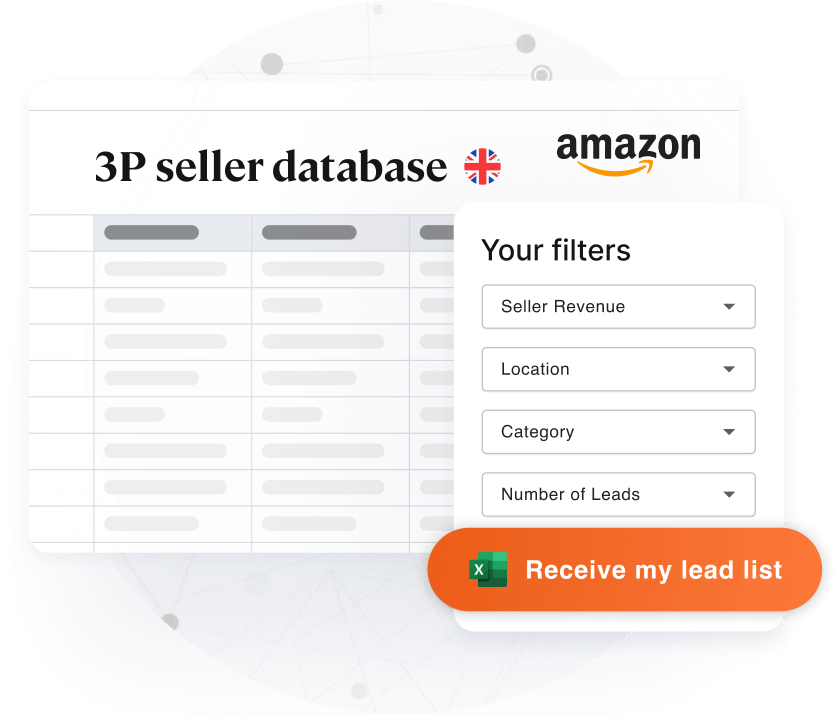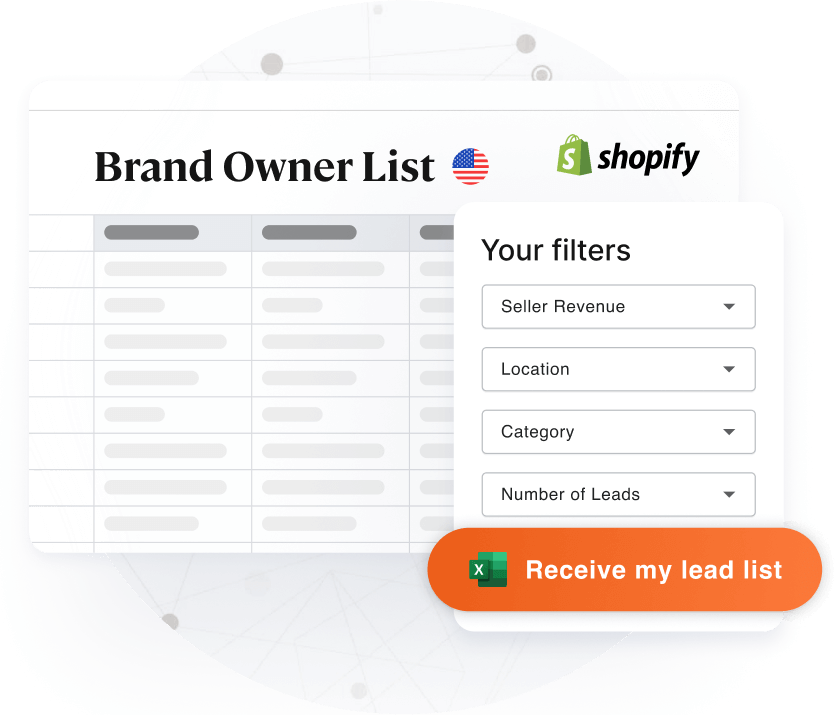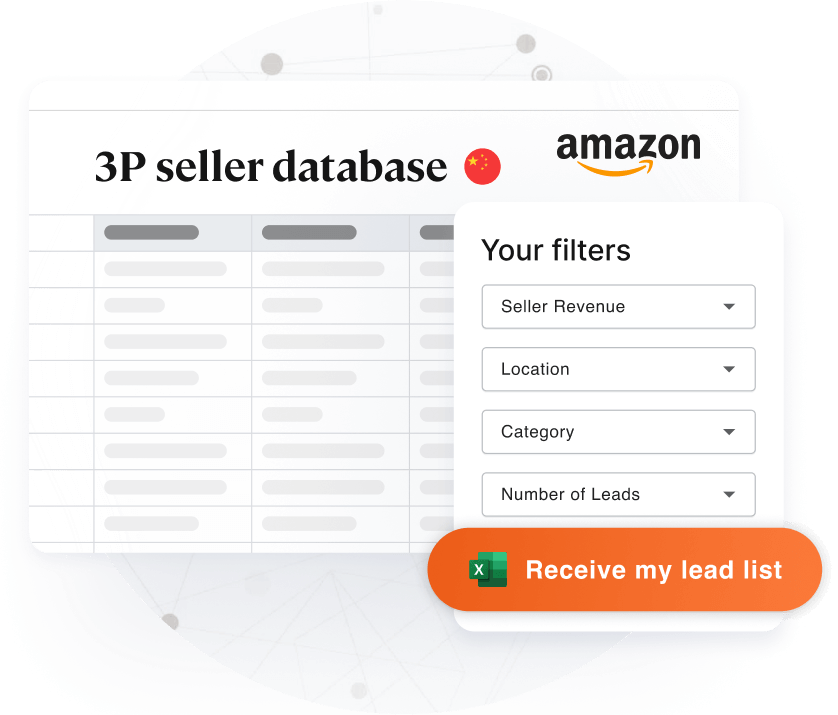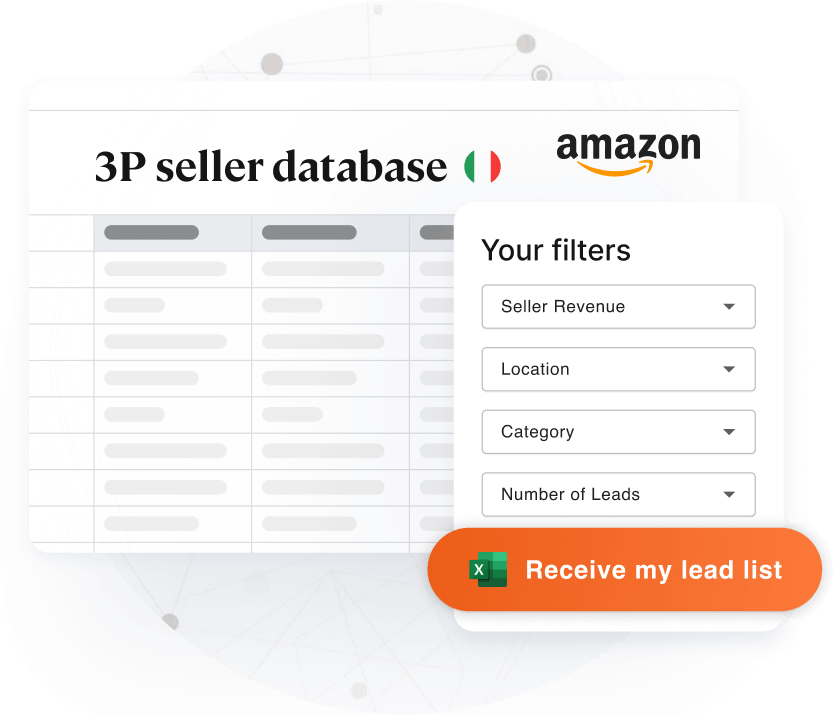Have you ever heard of 1P Vendors? While you may have researched extensively about Third-Party (3P) sellers on Amazon, First-Party (1P) Vendors remain hidden.
These 1P vendors make up 1/3 of Amazon’s total sales yet many B2B service providers ignore their importance. If leveraged correctly, these 1P Vendors can prove to be a golden ticket for your business.
Today, let's understand who 1P Vendors are what makes them unique, and how you can benefit from them.
Understanding Amazon's 1P Vendors
1P Amazon Vendors is an untapped market for B2B service providers. These vendors are often high-scale, stable cashflow businesses with huge sales and diverse product offerings. These vendors benefit from a direct partnership with Amazon and features such as prime shipping.
Who Are 1P Amazon Vendors?
1P Vendors are the wholesaler suppliers of Amazon where 1P Vendors sell their goods to Amazon directly. Amazon acts as a retailer for these brands, adding its credibility and selling to customers.
In this case, Amazon is responsible for managing inventory, pricing, client service, and sales returns. It is an invite-only program where vendors are invited by Amazon to Vendor Central to share their products and price listings.
Like 3P Sellers, Amazon 1P Vendors are present in every market and oversee their listing, advertising, and supply chain to Amazon warehouses. However, their role is restricted to restocking with limited control over their product once it passes to Amazon.
How Does Amazon 1P Work?
1P Vendors are eligible to receive the coveted invitation for the Vendor Central usually if their revenue is more than $10 million. On the portal, they can create a 1P Vendors List highlighting their product offerings and prices.
Amazon then buys the products directly through purchase orders (POs), retaining them as inventory. In this way, Amazon acts as a retailer, selling directly to customers. Amazon also takes care of after-sales service, inventory management, and pricing.
How Does the 1P Business Model Operate?
Amazon 1P Vendors leverage Amazon’s premium services to boost their sales and profits. Whether it’s listing, marketing, or logistics, 1P vendors can benefit from Amazon’s premium services.
- Listing: 1P Vendors provide detailed product listings including images and specifications with Amazon enhancing them if required.
- Marketing: 1P Vendors benefit from Amazon Marketing Services which can be used to target specific audiences or boost certain products.
- Logistics: Amazon takes care of logistics through its FBA process leaving 1P Vendors to focus on their core strength.
What are the Benefits Associated with a 1P Vendor Account?
There are many benefits associated with Amazon’s 1P Vendor program including Amazon’s seal of approval, prime listing, and FBA among many others.
1. Amazon’s Seal of Approval
All products sold under 1P include the label ‘Ships from Amazon’ and ‘Sold by Amazon’.
According to a recent survey, 74% of consumers preferred purchasing from brands with these labels. 1P can tie Amazon’s credibility with the vendor’s products increasing the likelihood of customer’s trust and subsequent purchase.
2. Expanded Advertising Opportunities
1P Vendors gain access to Amazon Marketing Services (AMS) which can boost their sales multifold. By utilizing solutions like sponsored brands and display ads, vendors have a golden opportunity to enhance visibility. Likewise, 1P products may be selected in promotion plans like ‘Deal of the Week’, driving sales and profits.
3. Reduced Administrative Oversight
With the 1P model, the headache of sorting the logistics from packaging to shipment is with Amazon. 1P Vendor’s job is only to receive the huge purchase order and deliver the products to Amazon’s warehouse. After that Amazon takes care of everything, leaving them with more time to focus on product hunting and supplier negotiation.
What are the Challenges Faced by 1P Vendors?
As with everything rosy, there are some downsides to the 1P model including no control over product pricing and over-reliance on Amazon among others.
1. No Control Over Product
As 1P Vendors act as wholesalers to Amazon, they lose control over their product once it reaches Amazon’s warehouse. Amazon is responsible for setting the price and managing the inventory, not the 1P Vendor.
Amazon is reportedly known for rejecting price increase demands from 1P Vendors even if it’s justified due to inflation.
2. Over-Reliance on Amazon
Amazon 1P Vendors rely on purchase orders from Amazon to pump their income stream. If Amazon suddenly stops purchasing the product or concludes that the product is not in demand, sales can take a hit for 1P Vendors. This can especially hurt if the product is strategically important for the Vendor.
3. Additional Fees
Amazon may impose additional fees on 1P Vendors if stock levels are not maintained. These can include chargebacks, remittance fees, and marketing fees which can eat into your profits. Likewise, payment from Amazon may take a long time based on terms, creating issues with maintaining cash flow.
How Can B2B Services Assist 1P Vendors?
B2B service providers operating in diverse industries such as SaaS or Marketing can assist 1P Vendors in expanding their services and overcoming existing challenges. There’s a lucrative opportunity for B2B service providers to target 1P Vendors as they are typically ignored over 3P Sellers.
How Can SAAS Companies Offer Solutions to 1P Vendors?
SaaS companies can benefit from tailor-made solutions to 1P Vendors by offering technology-oriented solutions.
Technology Solutions offered by SAAS Companies include:
- Inventory Management: Managing inventory with huge purchase orders from Amazon can prove to be challenging and lead to penalties and even delisting by Amazon. SaaS platforms can offer various niche inventory management systems that can help 1P Vendors automate inventory reordering, forecast demand, and analyze customer behavior.
- Data Analytics: Data analytics software can assist 1P vendors in providing market-driven insights about customer behavior, in-demand products, and seasonal movements. This can lead to better decision-making and more efficient outcomes for 1P Vendors.
How Can Marketing Agencies Offer Solutions to 1P Vendors?
Agencies can provide flexible solutions to 1P Vendors by offering services such as digital marketing or SEO. Niche Solutions offered by Agencies include:
- Marketing Solutions: Advertising agencies can ensure 1P Vendor’s product offerings are optimized with in-demand keywords and images. These agencies can also create A+ content that can lead to more sales and profits.
- Branding Expertise: The brand can go a long way in creating customer loyalty for 1P Vendors. By ensuring that products are FBA and Amazon Prime eligible, agencies can assist in creating a unique brand following.
- SEO Services: By using on-page and back-end optimization, agencies can help in ranking 1P Vendors higher. If the product is competitive and popular, SEO can grant a competitive edge to 1P Vendors.
Should Investors Invest in 1P Vendors?
Yes, investors may find a lucrative opportunity with 1P Vendors because it’s low-risk and high-return. Amazon has already vetted 1P Vendors and only invites the best of the lot to Vendor Central.
Reasons to Invest in 1P Vendors
1P Vendors are relatively safe and stable with high turnovers and stable cashflows. These make them an ideal investment with stable returns.
- E-commerce growth: The e-commerce industry has grown exponentially in the last few years reaching 3,657 billion dollars in 2024. As markets keep on recovering post-COVID, e-commerce will keep up its pace with a strong upward trajectory.
- Safer Investment: 1P Vendors are already vetted by Amazon and provide a safe investment option with stable demand and stock management. Moreover, the whole process is managed by Amazon itself making it more efficient and ideal to make a return.
- Large Scale: Most 1P Vendors operate on a scale making with sales in millions of dollars. Moreover, with the whole process outsourced to Amazon, these Vendors spend more time diversifying their products and creating new brands, making them an ideal investment.
How to Recognize 1P Vendor Products?
Several implicit and explicit indicators can help recognize 1P vendor products including the following:
- “Ships from” and “Sold by” Amazon: If the product listing indicates it ships from and is sold by Amazon, it is likely a 1P Vendor Product.- A+ Content: If the product is marketed using Amazon Marketing Services (AMS) such as with A+ content, it may be a 1P Vendor Product.
- Vendor Central: If the product details mention Vendor Central, it is likely the product is a 1P Vendor product.

Insider Statistics on Amazon 1P Vendors Database
Finding relevant data and insights about 1P Vendors is quite difficult due to various reasons. In this section, we present several insightful statistics about Amazon’s 1P Vendors for free!
Number of Unique 1P Vendors by Country
Although they represent 33% of the sales, there are significantly fewer 1P Vendors than 3P sellers. SellerDirectories has been monitoring the 1P vendor market, and here's the number of unique 1P Vendors we have identified, categorized by country.
While these numbers are not official, they are factually close to the underlying data.
|
Country |
Number of Unique 1P Vendors |
|
United States (US) |
4,677 |
|
Germany (DE) |
2,525 |
|
United Kingdom (UK) |
1,494 |
|
Italy (IT) |
869 |
|
Spain (ES) |
825 |
|
France (FR) |
560 |
|
Country not identified |
2,800 |
|
Total |
10,950 |
If you want to explore more, check out our 1P Vendor databases.
Top Product Departments with 1P Vendors by Proportion
Different product departments are favored by Amazon when selecting 1P Vendors. In line with the business model, stable products with a high propensity to sell are preferred.
The most popular product department is Grocery and Gourmet Food (16%) followed by Health and Household products (15%). Other products include Beauty and Personal Care (11%), Sports and Outdoors (14%), and Apparel and Fashion (6%).

Data Source: SellerDirectories
|
Product |
Percentage |
|
Grocery & Gourmet Food |
16% |
|
Health & Household |
15% |
|
Beauty & Personal Care |
11% |
|
Sports & Outdoors |
14% |
|
Apparel & Fashion |
6% |
Successful U.S. Companies Operating as 1P Vendors on Amazon
Several U.S. companies are operating successfully as 1P Vendors and benefiting from the business model including:
- 18.21 Man Made - 1821manmade.com - Storefront
- Baby Delight - babydelight.com - Storefront
- Champion Sport - championsports.com - Storefront
- EO Products - eoproducts.com - Storefront
- Essential Oxygen - essentialoxygen.com - Storefront
If you want to leverage the power of databases for your business, visit our 1P UK Vendor Database.
FAQs
Q1) What is a 1P Vendor on Amazon?
1P Vendors are direct sellers of goods to Amazon, serving as wholesale suppliers. After that, Amazon handles customer support, pricing, and inventory management while selling these goods to consumers.
Q2) How does the 1P Vendor Programme at Amazon Operate?
Vendors are invited to join Vendor Central, where they publish their products and prices, as part of Amazon's 1P Vendor program. Purchase orders are used by Amazon to acquire these goods, and the merchant oversees sales.
Q3) What advantages Come with Being an Amazon 1P Vendor?
Amazon's seal of approval, premier listing, fixed fee structure, less administrative monitoring, and access to Amazon Marketing Services are all advantages for 1P vendors.
Q4) What Difficulties do 1P Vendors Encounter?
Difficulties include not having control over product prices, depending too much on Amazon for sales, and maybe paying extra fees to Amazon.
Q5) How may 1P Vendors Benefit from B2B services?
To assist 1P Vendors in growing and managing their business, B2B service providers, such as SaaS businesses and agencies, provide inventory management, data analytics, marketing solutions, branding knowledge, and SEO services.
Q6) Do Investors think About Making investments in 1P Vendors?
Because of their consistent cash flows, high turnover rates, and the secure, controlled atmosphere that Amazon offers, 1P Vendors can be a profitable investment choice.
Q7) How does one identify an Amazon 1P Vendor product?
Search for products that have the label "Ships from and Sold by Amazon" and see if Vendor Central is featured or if they use A+ content.
Q8) Which kinds of goods do 1P Vendors typically sell?
Grocery & Gourmet Food, Health & Household, Beauty & Personal Care, Sports & Outdoors, and Apparel & Fashion are popular sections for 1P Vendors.
Q9) To what extent do 1P Vendors contribute to Amazon's sales?
1P Vendors are an important component of the market, contributing around 33% of Amazon's sales.
Q10) Are 1P vendors on Amazon more numerous than 3P sellers?
No, compared to 3P Sellers, 1P Vendors are far less numerous, yet they still account for a sizeable share of Amazon's sales.






